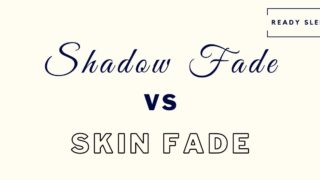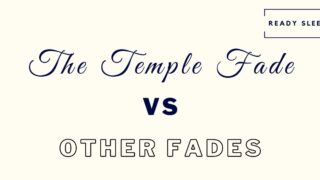Learning the lingo can be tricky – but don’t let it overwhelm you. Once you’ve got the basics down, discussions with your barber will get a whole lot easier. You’re about to learn everything you need to know about the 0.5 fade (a.k.a half fade).
Let’s get to it.
What Is A 0.5 Fade?
A 0.5 fade, also known as a “half fade”, is an effect where the back and sides are trimmed down to approximately 1.5 to 2mm before gradually blending into longer lengths as you go up toward the top.
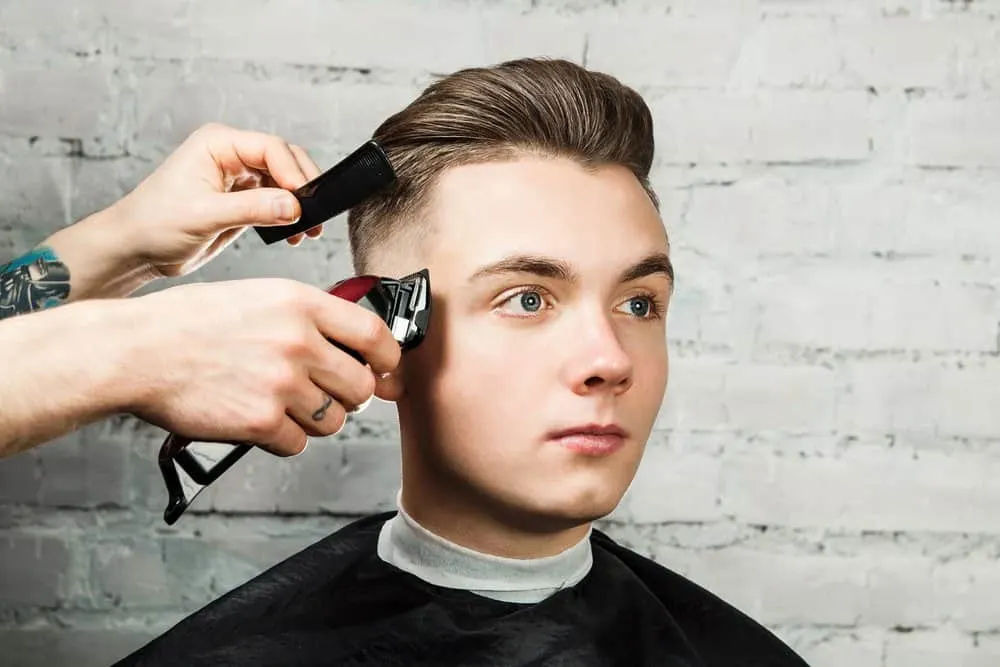
The “0.5” length can either be achieved using a #0.5 clipper guard or by simply using the clipper blade with no guard attached and the lever opened.
It’s important to note that many brands do not come with a #0.5 clipper guard. Wahl clippers generally do, but most others don’t.
While many barbers do use Wahl clippers, those without them may have to simply use the lone clipper blade (lever open) to achieve a length that’s close to what they’d be able to get with a #0.5 guard.
In fact, many tend to prefer to use the lone clipper blade to get that #0.5 length instead of actually using a #0.5 clipper guard, even if they’ve got access to one.
This is how 0.5 fades work.
The shortest length at the back and sides will be a #0.5. This will usually be around 1.5-2mm long.
It’ll then gradually blend or “fade” into longer lengths as you go up.
How Do You Ask For A 0.5 Fade
To ask for a 0.5 fade you need to specify how high up you want the transition point to be, as well as what length you want the #0.5 to transition into. You will also need to state what you want to do with the hair on top.
Let’s start with the transition point.
The point at which this transition from the #0.5 length into longer lengths occurs (i.e the transition point) is important when it comes to naming the fades.
If the transition point is just above the ear, it’ll be called a “low 0.5 fade”.
If it’s around the level of the temple, it’ll be called a “high 0.5 fade”.
If it’s somewhere between the two, it’ll be called a “mid 0.5 fade”.
Using this terminology, let the barber know where you want the transition to occur.
You also need to let them know what length you want to transition the 0.5 into as you go higher up.
For example, into a #1 or a #2 length at the top of the back and sides. Although you could go even longer, these are the most common lengths to blend the 0.5 length into.
“A low 0.5 fade into a #2” would have the shortest hair at the bottom as the #0.5 length (approx 1.5 to 2mm) and gradually start to transition into the #2 length (approx 6mm) as you go higher up toward the top.
Finally, you’ll need to let the barber know what you want to do with the hair on top. The possibilities are endless – buzz cuts, quiffs, pompadours – whatever you want.
While the half fade (0.5 fade) is pretty strictly defined on the back and sides, you’ve got a lot of options when it comes to the hair on top.
0.5 Fade Styles To Inspire You
Here are some examples for you to take inspiration from. I’ve separated them according to the transition point.
0.5 Fade Into 2
The 0.5 fade into 2 gradually transitions the #0.5 length into the #2 length as you go up the sides and back.
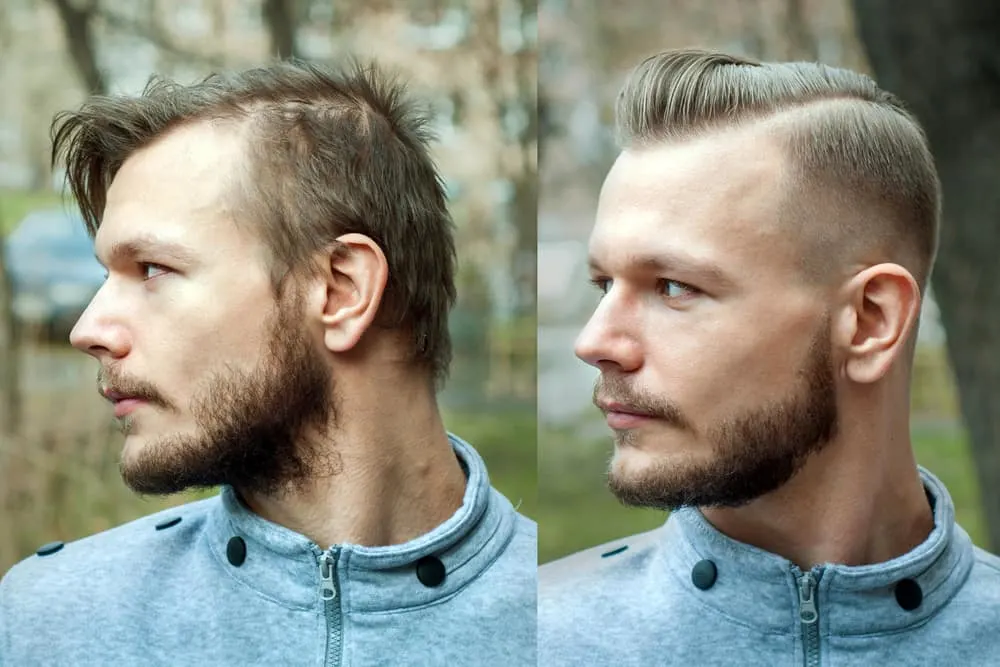
Given the contrast between the #0.5 length and the #2 length, this fade has a slightly more striking appearance than the 0.5 into 1.
However, it’s still a pretty straightforward fade effect to achieve and most barbers should be able to get it done with no trouble at all.
Any harsh lines will be faded out using clipper guard lengths in between the #0.5 and #2, as well as by using the lever.
0.5 Fade Into 1
The 0.5 fade into 1 gradually transitions the #0.5 length into the #1 length (3mm) as you go up the sides and back.

As with any other fade, the point at which this transition occurs will determine whether it is a “low”, “mid”, or “high” 0.5 fade.
The difference between the #0.5 length and the #1 length isn’t very much – 1 to 1.5mm maximum.
Because of this, the fading effect is subtle. It’s a popular choice.
As with other 0.5 fades, you’ve got endless options when it comes to the hair on top.
As the 0.5 fade into 1 keeps the hair at the sides and back pretty short (at least for some of it), leaving the hair on top longer leads to an eye-catching contrast.
0.5 Mid Fade
The 0.5 mid fade keeps the shortest length at the back and sides at the #0.5 length (approximately 1.5 to 2mm), before starting to transition into longer lengths approximately an inch above the ear.

Mid fades are great because they’re a little more subtle than high fades, but still more attention-grabbing than a low fade or a simple taper.
As the 0.5 fade is a very short length, leaving no more than a “5 o’clock shadow” over the bottom of the sides and back, having it transition high up can be a bit too bold for a lot of men.
If you’re just trying out these short fade lengths, it may be a better option to go for mid fades or even a low fade instead of a high fade.
If you’re a fan, you can always ask for a high 0.5 fade next time round.
0.5 Fade Long On Top
A “0.5 fade long on top” simply refers to any style where the sides and back gradually increase in length from a #0.5 at the bottom, while the hair on top is left long.
The term is a very broad one, because “long on top” could mean so many different things.
In addition, this often-used term doesn’t say anything about how high up you want the 0.5 fade to go.
It also doesn’t say anything about what you want to transition the #0.5 length into as you go up the sides and back.
While it’s a useful term in some respects, it won’t be enough to let your barber know exactly what you want.
In addition, “long on top” could refer to so many different styles, ranging from French crops all the way to pompadours.
So, help your barber by giving them as much information as possible and making it easy for them to give you what you want.
0.5 Fade Comparisons
When it comes to short fade lengths, it can be tricky to tell them apart.
0.5 Fade Vs Skin Fade
With a 0.5 fade, the shortest length of the fade is clipped down to a #0.5 length (approximately 1.5mm long). In contrast, with a skin fade, the shortest length is shaved all the way down to the skin with a razor.
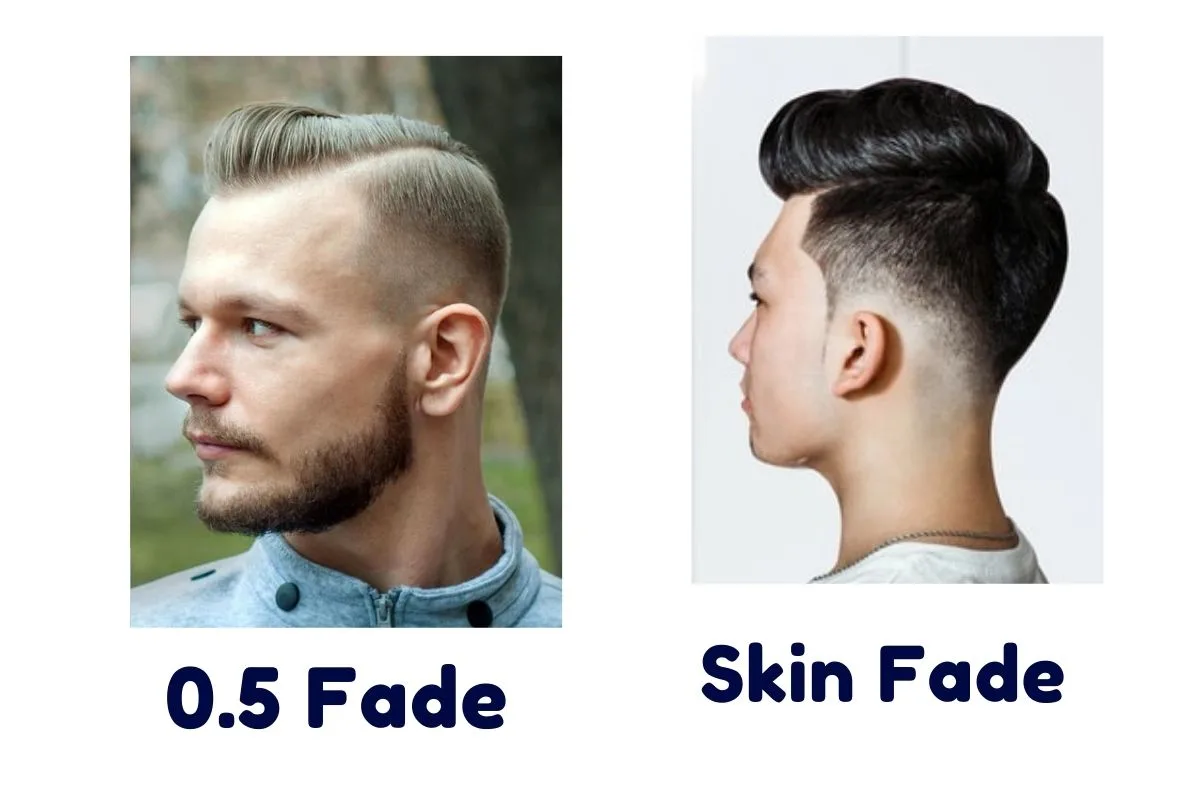
Images from Deposit Photos And Shutterstock
So, while the technique and the effect may be the same, the difference comes down to the length.
A 0.5 fade leaves a little bit of stubble behind because you aren’t shaving all the way down. The #0.5 length will either be achieved using a #0.5 clipper guard or by using the lone clipper blade with the lever open.
Either way, you won’t get as close or clean of a shave as you would with a razor.
Skin fades, as a result, can look pretty bold. That’s because the contrast between the shaved skin at the bottom and the longer lengths further up the sides and back is more striking.
While the 0.5 fade is still short, it isn’t quite as short as a skin fade.
So, if you’re looking for something a little more in your face, consider the skin fade instead of the 0.5 fade.
0.5 Fade Vs 1 Fade
With 0.5 fades, the shortest length of the fade is clipped down to a #0.5 length. In contrast, with 1 fades the shortest length is clipped down to a #1 length (3mm) before gradually increasing in length as you go up.
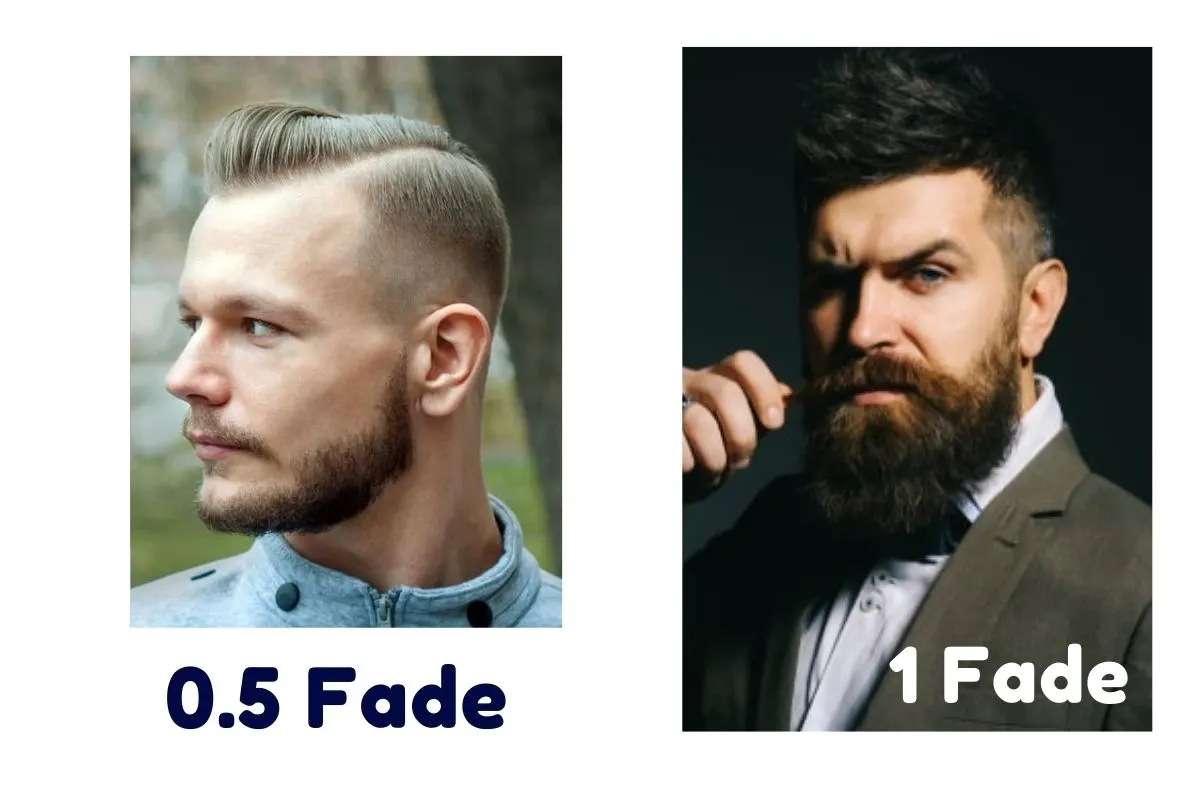
Images from Deposit Photos and Shutterstock
The 1 fade has the shortest length of the fade longer than that of the 0.5 fade. As a result, it often looks a little more subtle and not quite as striking.
1 fades are a good option for men who aren’t willing to go down as short as a 0.5 fade or maybe simply want to test out a stepping stone before taking the plunge into a 0.5 fade style.
Either way, the concept and technique are exactly the same with both the 0.5 fade and the 1 fade.
Each of them can be “low”, “mid”, or “high” fades depending on how high up the shortest length reaches before transitioning into longer lengths.
But a 1 fade is a little less obvious than a 0.5 fade, but still short enough to lead to a nice contrast with the hair on top.
Conclusion
There you have it. Hopefully, everything you could possibly want to know about the 0.5 fade.
Enjoy.
Ready Sleek founder. Obsessed with casual style and the minimalist approach to building a highly functional wardrobe. Also a fan of classic, vintage hairstyles.

![0.5 Fade (Half Fade): Styles, Length, More [With Pics]](https://www.readysleek.com/wp-content/uploads/2021/09/0.5-fade-720x405.jpg)

